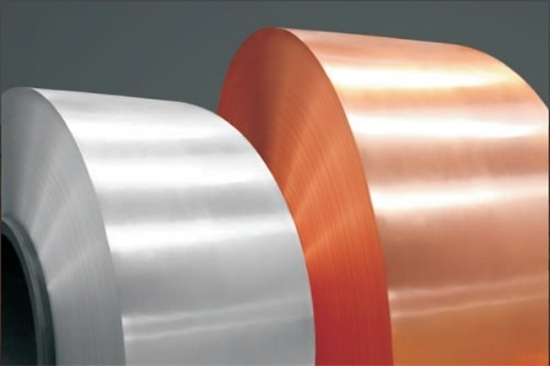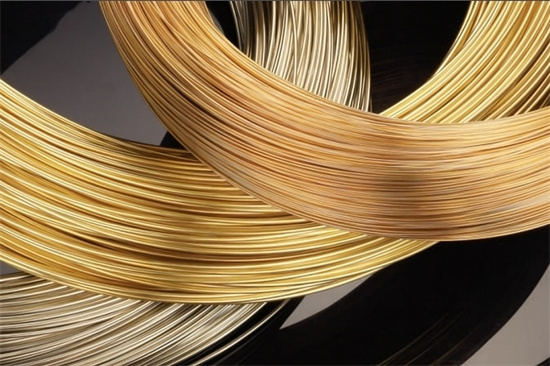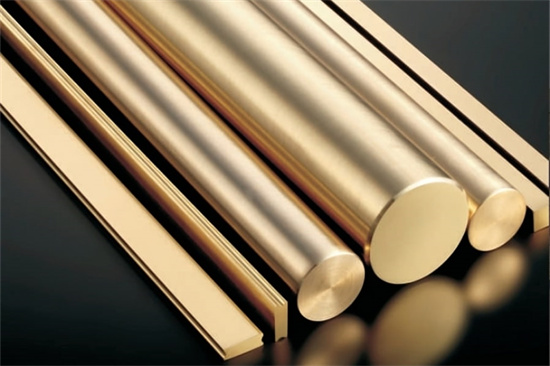


CuCrZr:高温と耐摩耗性のための究極の選択
低いMOQ
さまざまなニーズに対応するため、最低注文数量を少なくしています。
OEM & ODM
顧客独自のニーズに応えるため、カスタマイズされた製品とデザインサービスを提供する。
十分な在庫
迅速な注文処理と、信頼できる効率的なサービスの提供。
顧客満足度
顧客満足を核とした高品質の製品を提供する。
この記事を共有する
目次
高性能素材の世界で CuCrZr (銅-クロム-ジルコニウム)は、優れた品質を備えた多用途の合金として際立っています。 強さ, 熱伝導率そして 腐食 抵抗 さまざまな業界の厳しいアプリケーションに最適なオプションです。 航空宇宙 への 半導体製造.
この包括的なガイドでは、 CuCrZrからのものである。 構成 そして 機械的性質 その アプリケーション そして 価格設定材料エンジニア、調達スペシャリスト、あるいは合金の性能に興味のある人でも、このガイドが役に立ちます。
概要
CuCrZr 主に以下の成分からなる合金である。 銅、加えて クロム そして ジルコニウムこの組み合わせにより、 高強度, 優れた電気伝導性と熱伝導性、および優れた耐性 着用 そして 変形 高温でも耐えられる。これらの特性により CuCrZr 両方のアプリケーションで人気のある選択肢です 機械的性能 そして 熱安定性 が重要だ。
主な特徴:
- 高い導電性: 銅の自然な導電性の大部分を保持するため、電気用途に最適です。
- 熱安定性: 高温下でも優れた性能を発揮し、強度を維持し、変形を防ぎます。
- 耐食性: 酸化や腐食に対する耐性が良好で、特に 過酷な産業環境.
- 耐摩耗性: クロムとジルコニウムの添加により、合金の摩耗および機械的疲労に対する耐性が向上します。
組成と特性
のユニークな特性 CuCrZr 慎重にバランスが取れた 化学成分銅本来の特性を高めます。組成を詳しく見て、各元素が合金の性能にどのように貢献しているかを見てみましょう。
化学組成の内訳
| エレメント | パーセント(%) |
|---|---|
| 銅(Cu) | 97.5 – 99 |
| クロム(Cr) | 0.5 – 1.2 |
| ジルコニウム(Zr) | 0.03 – 0.3 |
| その他の要素 | 微量 |
- 銅(Cu): 合金の基本的な伝導性と熱特性を提供します。
- クロム(Cr): 強度、硬度、耐摩耗性が向上します。
- ジルコニウム(Zr): 合金の高温性能と変形耐性を強化します。
機械的および物理的特性
| プロパティ | 代表値 |
|---|---|
| 引張強度 | 400 - 600 MPa |
| 降伏強度 | 300 - 500 MPa |
| 硬度 | 120 – 170 高圧 |
| 電気伝導率 | 75 - 85% iacs |
| 熱伝導率 | 320 - 350 W/mK |
| 密度 | 8.9 g/cm³ |
| 伸び | 10 – 25% |
| 耐食性 | 産業環境に最適 |
なぜ構図が重要なのか:
- クロム そして ジルコニウム 強化するために追加されます 強さ そして 耐摩耗性 銅をあまり犠牲にすることなく 導電率.
- CuCrZr その特性を維持する能力を有する 高温これは、次のようなアプリケーションでは特に重要です。 溶接電極 または 半導体部品.
アプリケーション: 輝く場所
の多用途性 CuCrZr 幅広い業界で人気の素材です。 強度と導電性 安定したパフォーマンスが求められるアプリケーションでは特に有用である。 熱応力 そして 機械摩耗.
一般的なアプリケーション
| 産業 | アプリケーション |
|---|---|
| 航空宇宙 | 高応力部品、ヒートシンク、タービンブレード |
| 自動車 | 電気コネクタ、スイッチギア、溶接チップ |
| エレクトロニクス | 半導体ヒートシンク、RFコネクタ、トランジスタ |
| エネルギー | 電力分配、電極、通電部品 |
| 溶接 | 抵抗溶接電極、チップ、シャンク |
| プラスチック製造 | 金型インサート、コア、キャビティ |
CuCrZr がこれらの用途に最適な材料である理由:
- 航空宇宙: CuCrZr は、 高強度 そして 熱安定性-例えば ヒートシンク そして タービンブレード—高温にさらされることが多い場所。
- エレクトロニクス: 合金は優れている 熱伝導率 にとって理想的な選択である。 ヒートシンク そして 半導体製造、正確な制御 放熱 が必要です。
- 溶接: CuCrZr 最高の素材です 抵抗溶接のヒント、激しい 熱サイクル 高いレベルを維持しながら 電気伝導度.
仕様、サイズ、グレード
選択時 CuCrZr プロジェクトでは、さまざまな 仕様書, サイズそして 成績 このセクションでは、調達時に遭遇する典型的なオプションについて説明します。 CuCrZr お客様のニーズに合わせて
仕様とサイズ
| 仕様 | 詳細 |
|---|---|
| 形状 | 棒、シート、プレート、バー、ワイヤー |
| 直径範囲(ロッド) | 1 mm~200 mm |
| 厚さ範囲(シート) | 0.3mm~12mm |
| テンパー | 焼鈍、熱間圧延、冷間引抜 |
| 規格 | ASTM B224、EN 12163、BS 2874 |
グレード
| グレード | 主な特徴 |
|---|---|
| 銅クロムジルコニウム | 高い電気伝導性、適度な強度 |
| 銅クロムジルコニウムB | 溶接用途に典型的な強度と導電性のバランス |
| 銅クロムジルコニウム | 強度が高く、導電性が低いため、高ストレス環境に最適です。 |
スタンダードが重要な理由
遵守 業界標準 を保証する。 CuCrZr あなたのソースが満たす 品質 そして パフォーマンスの期待必ず確認してください 材料 目的のアプリケーションに関連する仕様に準拠しています。
サプライヤーと価格
ソーシング CuCrZr は、以下のような要因によって変化する。 グレード, 数量そして サプライヤー所在地品質を犠牲にすることなく最良の取引をどこで得られるかを知ることは、あらゆるプロジェクト、特に高性能材料を扱う場合には不可欠です。
サプライヤーと価格詳細
| サプライヤー | 所在地 | 価格帯(kgあたり) | 納期 |
|---|---|---|---|
| スペシャルティメタルズ株式会社 | アメリカ | $30 – $55 | 2~3週間 |
| アロイテック・インダストリーズ | ヨーロッパ | $28 – $50 | 1~2週間 |
| アジアメットメタルズ株式会社 | 中国 | $25 – $45 | 3~4週間 |
| 銅合金グローバル | インド | $27 – $48 | 2~4週間 |
| 優れた金属ソリューション | 英国 | $32 – $52 | 1~2週間 |
CuCrZrの価格に影響を与える要因:
- グレード: より強度の高いグレード、例えば 銅クロムジルコニウムは、パフォーマンス特性が強化されているため、より高価になる傾向があります。
- 数量: 大量注文には大きなコストがかかることが多い 値下げそのため、大量に購入すると長期的には節約になるかもしれません。
- 形状: CuCrZr で ワイヤー または プレート フォームの費用は ロッド または バー追加の処理が必要になるためです。
利点と限界
一方 CuCrZr は広く評価されている 強さ そして 熱伝導率プロジェクトにこの合金を選択する際には、長所と短所を比較検討することが重要です。以下では、 利点 そして 制限 の CuCrZr.
利点と限界
| メリット | 制限事項 |
|---|---|
| 高い電気伝導性と熱伝導性 | 標準的な銅合金に比べ高コスト |
| 優れた高温強度 | 純銅よりわずかに低い導電率 |
| 良好な耐食性 | 最適な性能を得るには精密な熱処理が必要 |
| 優れた耐摩耗性と耐疲労性 | 特定の形状やサイズでは入手が制限される |
CuCrZr はあなたのプロジェクトに適していますか?
を必要とするプロジェクトに取り組んでいるのであれば。 高い機械的強度, 熱安定性そして 良導電性, それ おそらく最良の選択肢です。しかし、 コスト または 最大導電率 が最優先事項である場合は、検討してみるといいかもしれません 純銅 またはその他の銅合金。
CuCrZrと他の銅合金の比較
アプリケーションに適した材料を選択する際には、いくつかのオプションを比較すると役立つことがよくあります。ここでは、 それ のような他の一般的な銅合金と C10100(無酸素銅) そして CuNi2Si をご覧ください。
CuCrZr 対 C10100 および CuNi2Si
| プロパティ | CuCrZr | C10100(無酸素銅) | CuNi2Si |
|---|---|---|---|
| 引張強度 | 400 - 600 MPa | 200~300MPa | 500 – 750 MPa |
| 降伏強度 | 300 - 500 MPa | 70 - 100 MPa | 350 - 500 MPa |
| 電気伝導率 | 75 - 85% iacs | 100% IACS | 30 - 50% iacs |
| 熱伝導率 | 320 - 350 W/mK | 380 – 400 W/mK | 180 - 220 W/mK |
| 耐食性 | 素晴らしい | グッド | 素晴らしい |
| コスト | 中程度 | 低い | 中程度 |
| アプリケーション | 航空宇宙、溶接、電子工学 | 高導電性配線 | 高応力コネクタ、スプリング |
重要なポイント
- それは を提供する。 強度と導電性のバランスに適している。 高性能アプリケーション 機械的特性と電気的特性の両方が重要になります。
- C10100 次のような場合におすすめです 最大導電率 必要ですが、 強さ そして 熱安定性 の CuCrZr.
- CuNi2Si 次のようなアプリケーションに適しています より高い機械的強度 を犠牲にして 導電率.
よくある質問(FAQ)
の特性と潜在的な用途をさらに明確にするために CuCrZrここでは、この合金に関するよくある質問をいくつか紹介します。
| 質問 | 答え |
|---|---|
| CuCrZr は何に使用されますか? | それは などの業界で一般的に使用されている。 航空宇宙, エレクトロニクスそして 溶接 両方を必要とするコンポーネントの場合 強さ そして 導電率. |
| CuCrZr は純銅と比べてどうですか? | それは の方がはるかに高い。 強さ そして 耐摩耗性、しかし、わずかに低い 電気伝導度 純銅に比べて |
| CuCrZr は高温用途に適していますか? | そうだ、 それ 非常に優れたパフォーマンスを発揮します 高温での使用に最適である。 溶接電極 そして 産業用途. |
| CuCrZr の価格はいくらですか? | の価格である。 CuCrZr の範囲にある。 $25~$55(1kgあたり)による。 グレード, フォームそして サプライヤー. |
| CuCrZr の主な利点は何ですか? | それは 組み合わせる 高強度, 熱安定性そして 良好な電気伝導性に最適である。 高性能アプリケーション. |
| CuCrZr にはどのような規格が適用されますか? | それは 典型的には次のような基準に準拠している ASTM B224 そして EN 12163 を確保する。 品質 そして 信頼性. |
結論
結論として それ は、 強さ, 熱安定性, 耐摩耗性そして 良好な電気伝導性.このような資質が それ 幅広い産業の厳しい用途に最適な素材です。 航空宇宙 への 半導体.
耐えられる素材が必要な場合 高温届ける 安定した電気性能そして、こう提案する。 機械的強度, それ は優れた選択肢です。他の銅合金に比べてコストは高くなりますが、長期的なパフォーマンスと耐久性は投資を正当化する以上のものとなることがよくあります。
最新価格
Met3DPについて
製品カテゴリー
ホットセール

3Dプリンティングと積層造形用金属粉末








